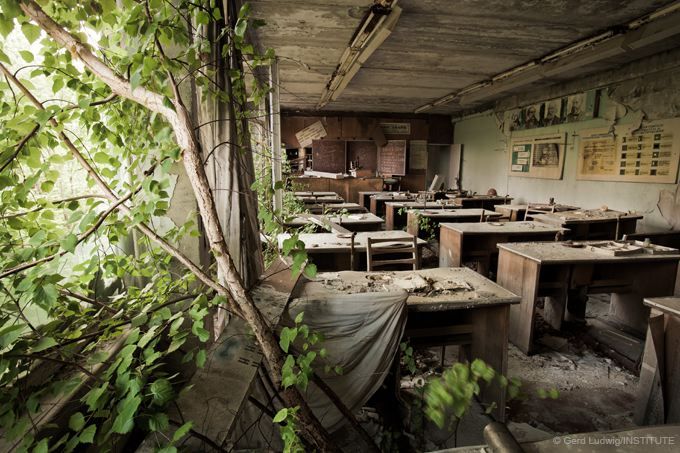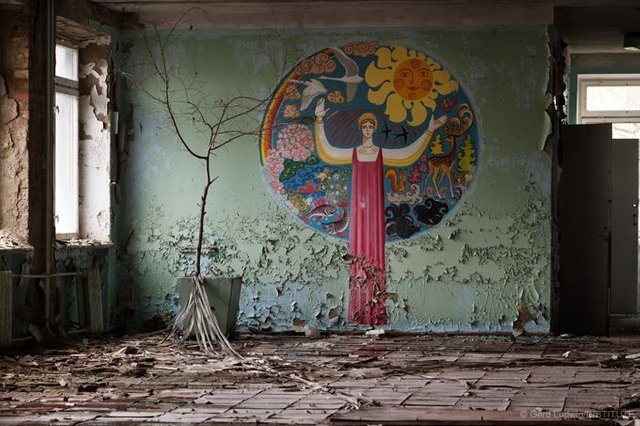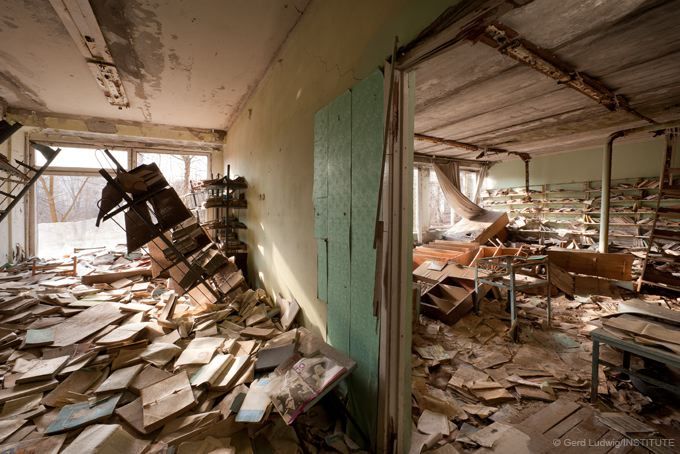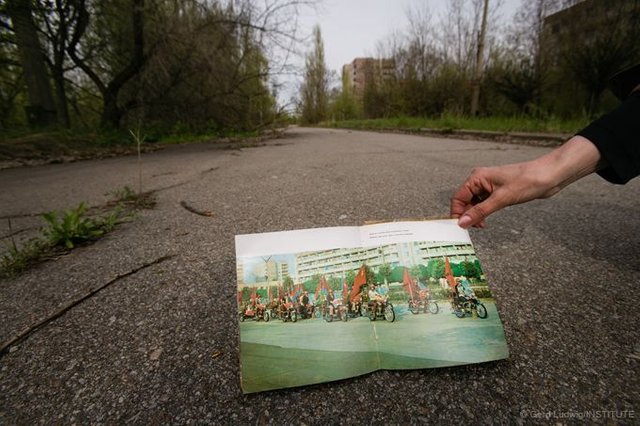Pripyat is a ghost town in northern Ukraine, near the Ukraine-Belarus border. Named after the nearby Pripyat River, Pripyat was founded on 4 February 1970, as the ninth nuclear city in the Soviet. Pripyat was founded on February 4, 1970. The main reason for the city foundation was the construction and further exploitation of Chernobyl nuclear power plant.
It became the ninth nuclear power city in the Soviet Union.
The population was 47,500 (November 1985). It was the last census held before evacuation. Originally, Pripyat was planned to be the home for 75,000-78,000 people.
The city was a convenient transportation juncture in Polesye area.
The population of Pripyat was evacuated on April 27, 1986, because of the Chernobyl accident. Slavutich, a new town-sputnik, was built about 50 km from the nuclear power station.
Pripyat is known worldwide because of the Chernobyl disaster happened at Chernobyl Nuclear Power Plant. The population of the city was about 49,400 before the disaster (April 26, 1986).
After the disaster, the city was abandoned. Nowadays, it is known as the ghost city.
Present day Pripyat attracts tourists and scientists from all over the world.
In the 1970s, the town of Pripyat, less than 3 kilometers away from the reactor, was constructed for the plant’s personnel. Once a beautiful town by Soviet standards, its 50,000 inhabitants were evacuated 36 hours after the accident. Today a chilling ghost town, its buildings bear witness to the hasty departure. Dolls are scattered on the floors of abandoned kindergartens; children’s cots are littered with shreds of mattresses and pillows; and in a gymnasium, where teens once trained, floors rot and paint peels. Amidst the surrounding decay, decades after the catastrophe, nature reclaims the town: trees grow through broken windows, and grass pushes up through the cracks in dormant roads that
once were glorious promenades – but the town remains unfit for human habitation for hundreds of years to come.
A rooftop view from the former Polissya Hotel in the center of Pripyat shows the proximity of the ill-fated Chernobyl Nuclear Power Plant to this former home of 50,000. Today, Pripyat stands a ghost town over-run by nature. [Pripyat, Ukraine 2005]

Trees grow in a Pripyat school abandoned 19 years earlier. Today, nature is slowly dismantling the city, thriving among the evacuated homes and buildings, and standing in stark contrast to the fear-plagued lives of the people who survived the world’s worst nuclear disaster to date. [Pripyat, Ukraine, 2005

Nineteen years after the accident, the empty schools and kindergarten rooms in Pripyat – once the largest town in the Exclusion Zone with 50,000 inhabitants – are still a silent testament to the sudden and tragic departure. Due to decay, this section of the school building has meanwhile collapsed. [Pripyat, Ukraine 2005]

Books rot and paint peels 25 years in a decaying school library in the ghost town of Pripyat. [Pripyat, Ukraine 2011]

Pripyat: a photo of the same street years earlier. [Pripyat, Ukraine 2005]
some of the points and all the photos are from the google so @cheetah go easy on me.
Hi! I am a robot. I just upvoted you! I found similar content that readers might be interested in:
http://ukrainetrek.com/pripyat-city
Downvoting a post can decrease pending rewards and make it less visible. Common reasons:
Submit
"Rule #2 = Your photo must be taken by YOU. If you take an imagine from the internet and use it as your entry into this contest, you will be disqualified and I will flag you."
I won't flag you as you at least stated the photos aren't your own, but please follow the rules in the future.
Downvoting a post can decrease pending rewards and make it less visible. Common reasons:
Submit
Wow I still would not go there. Amazing to see your shots though! 💯🐒
Downvoting a post can decrease pending rewards and make it less visible. Common reasons:
Submit